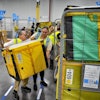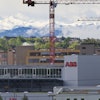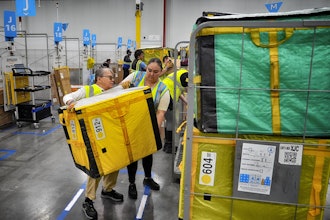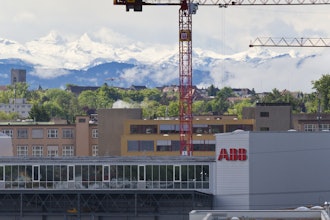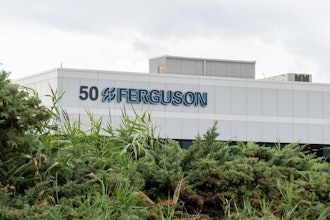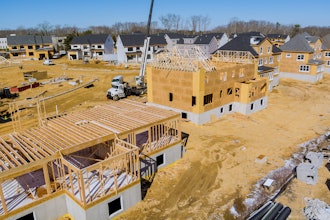WASHINGTON (AP) — Fewer people applied for unemployment benefits last week, an encouraging sign that the job market may be slowly improving.
The number of applications dropped by 22,000 to a seasonally adjusted 405,000, the Labor Department said, the lowest level in almost three months. The total would have been even lower if Minnesota's government wasn't shutdown. That caused 11,500 state workers to file applications last week, the department said.
Separately, U.S. companies paid less for raw materials and factory goods in June. The decline in wholesale prices was driven by the steepest fall in energy prices in nearly two years. Gas prices dropped by the most since last May, the Labor Department said.
Falling gas prices also held back retail sales in June, even as consumers spent more on cars and in big chain stores. The Commerce Department said retail sales rose a modest 0.1 percent. An easing of supply chain disruptions lifted auto sales 0.8 percent.
Investors appeared to be encouraged by the modest improvement in the economy. The Dow Jones industrial average climbed more than 78 points in early-morning trading. Broader indexes also gained.
But economists viewed the data cautiously, particularly after two straight months of feeble hiring.
The weak job market "has forced households to be a bit more careful with their cash," said Paul Dales, an economist at Capital Economics, in a note to clients. "For the moment, these data will do little to dispel fears that the economic recovery is going nowhere."
Unemployment benefit applications have now topped 400,000 for 14 weeks, evidence that the job market has weakened since earlier this year. The four-week average, a less volatile measure, dropped to 423,250 last week. That's the lowest since late April.
Applications had fallen in February to 375,000, a level that signals healthy job growth.
Companies pulled back on hiring sharply this spring. The economy added only 18,000 net jobs in June, the second straight month of dismal hiring. The unemployment rate rose to 9.2 percent, the highest this year. That's far below the average job gains of 215,000 per month in the February-April period.
Federal Reserve Chairman Ben Bernanke told Congress on Wednesday that temporary factors, such as high gas prices and supply chain disruptions caused by the Japan crises, have slowed the economy. They should begin to fade and the economy should grow at a faster pace in the second half of this year, he said. But if not, he said the central bank is prepared to do more to stimulate growth.
Gas prices peaked in early May near $4 a gallon but have fallen steadily since. Prices at the pump averaged $3.65 on Wednesday, according to AAA.
Sales at gas station sales fell 1.3 percent in June. Sales at general merchandise stores, which include stores such as Wal-Mart and Target, rose 0.4 percent.
The Producer Price Index, which measures price changes before they reach the consumer, declined 0.4 percent in June. Wholesale energy prices fell 2.8 percent, the biggest decline in nearly two years.
Food prices rose 0.6 percent in June, mostly because of higher fruit and melon costs. Oranges jumped 41.2 percent, and carbonated soft drinks rose 7.5 percent, the most since the government began tracking that category in 1996.
Excluding the volatile food and energy categories, the so-called core index rose 0.3 percent, driven largely by a jump in prices for pickup trucks.
The economy expanded only 1.9 percent in the January-March period, and most economists believe it grew at a similarly weak pace in the April-June period.
Many economists expect growth to rebound to a 3 percent pace in the second half of the year. But growth must be stronger than that to significantly lower the unemployment rate.
The economy would need to grow 5 percent for a whole year to bring down the unemployment rate by one percentage point. Economic growth of just 3 percent a year would hold the unemployment steady and keep up with population growth.

